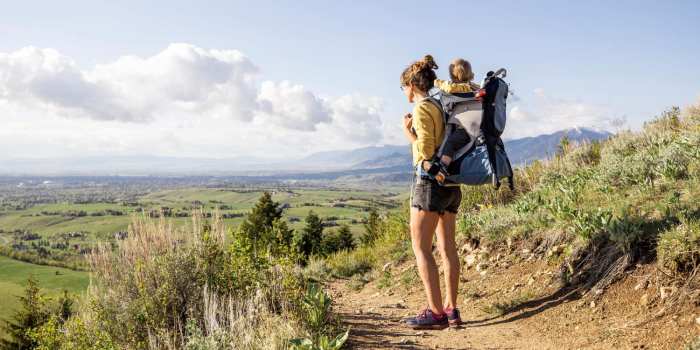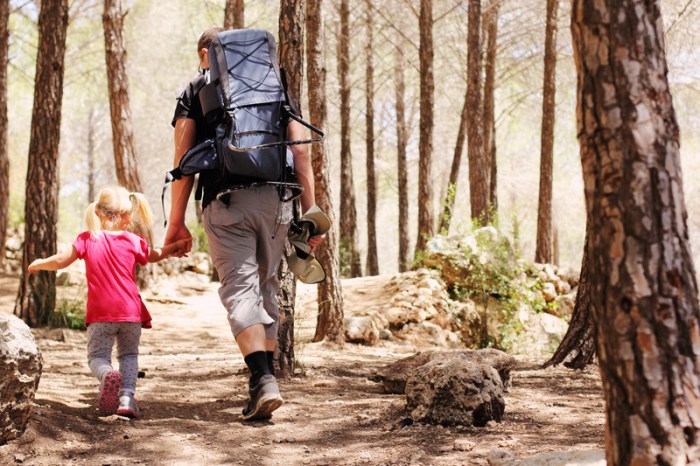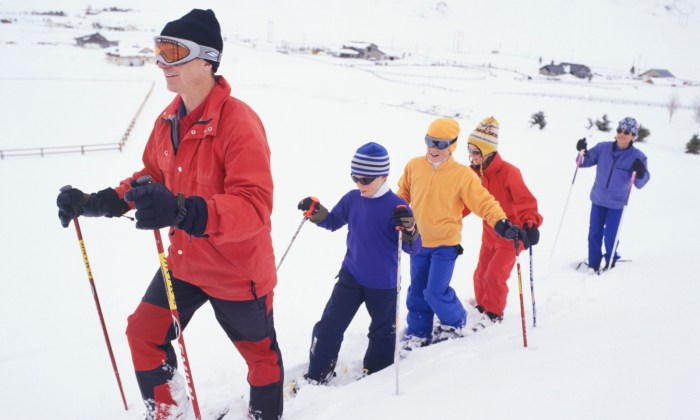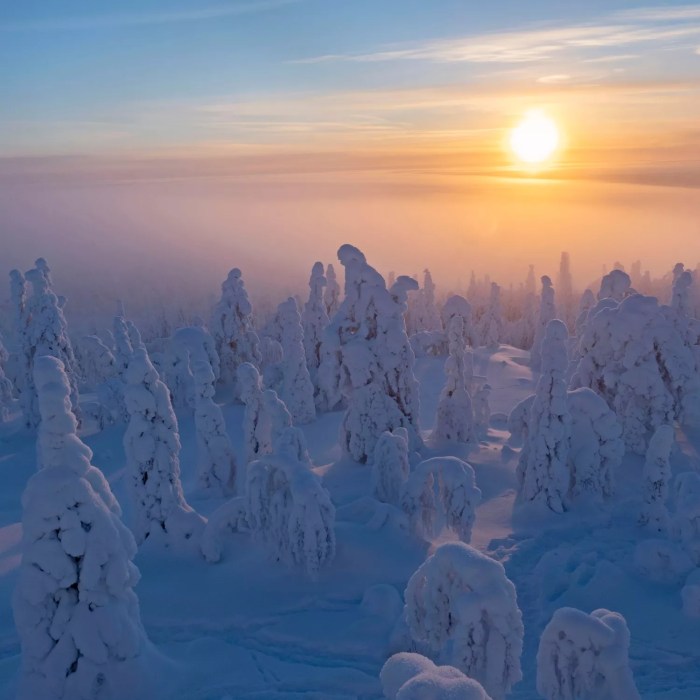
Family-Friendly Hiking Trails offer a wonderful opportunity for outdoor adventures suitable for all members of the family, from kids to grandparents. Let’s explore some of the best trails around the world that cater to various skill levels and ages.
When it comes to hiking with family, choosing the right trail is crucial for an enjoyable experience. From preparation tips to keeping the little ones engaged, there are plenty of things to consider before hitting the trails.
Family-Friendly Hiking Trails
Family-friendly hiking trails offer a great opportunity for bonding and adventure for all ages. When planning a hiking trip with children and elderly family members, it is crucial to choose trails that are suitable for their capabilities and interests. Here are some popular family-friendly hiking trails around the world:
Examples of Popular Family-Friendly Hiking Trails
- Acadia National Park, Maine, USA: Easy trails with beautiful coastal views.
- Cinque Terre, Italy: Scenic trails along the Mediterranean coast.
- Banff National Park, Canada: Family-friendly trails with stunning mountain scenery.
- Blue Mountains National Park, Australia: Short walks to waterfalls and lookout points.
Importance of Choosing Suitable Trails
Choosing trails that are appropriate for children and elderly family members is essential to ensure a safe and enjoyable experience. Look for trails with gentle inclines, shorter distances, and interesting features like waterfalls or wildlife to keep everyone engaged.
Preparing for a Family Hike
- Pack essential items such as snacks, water, sunscreen, hats, and a first aid kit.
- Dress in layers and wear comfortable shoes suitable for hiking.
- Check the weather forecast and plan accordingly.
Tips for Keeping Kids Engaged
- Encourage a sense of exploration by letting kids lead the way or search for wildlife.
- Bring along nature guidebooks or binoculars for a fun learning experience.
- Play nature-themed games or have a scavenger hunt along the trail.
Hiking and Trekking: Family-Friendly Hiking Trails
When it comes to outdoor activities, hiking and trekking are popular choices for nature lovers and adventure seekers alike. Both activities involve walking in natural environments, but there are key differences in terms of difficulty and duration.
Hiking vs. Trekking
Hiking is generally considered to be less strenuous and shorter in duration compared to trekking. Hiking trails are usually well-marked and maintained, making them suitable for beginners or families looking for a leisurely outdoor experience. On the other hand, trekking involves longer distances, more challenging terrain, and often requires overnight camping or multi-day trips. Trekking routes can vary from moderate to difficult, requiring a higher level of physical fitness and outdoor skills.
Benefits of Hiking and Trekking
- Improves cardiovascular health and fitness
- Strengthens muscles and joints
- Reduces stress and anxiety
- Enhances mental clarity and focus
- Connects you with nature and promotes mindfulness
Best Practices for Beginners
- Start with short and easy trails to build endurance
- Invest in proper hiking boots and clothing for comfort and safety
- Carry essential gear such as water, snacks, a map, and a first aid kit
- Hike with a buddy or group for added safety and enjoyment
- Leave no trace by packing out your trash and respecting the environment
Must-Have Gear for Hiking and Trekking
- Quality hiking boots with ankle support
- Weather-appropriate clothing layers
- Trekking poles for added stability
- A backpack with hydration system or water bottles
- Sunscreen, sunglasses, and a hat for sun protection
- Headlamp or flashlight for night treks
- Emergency whistle, compass, and multi-tool
Mountain Adventures
Embarking on mountain adventures can provide a thrilling experience like no other, whether it’s summiting peaks or exploring the stunning alpine landscapes.
Safety Tips for Mountain Adventures
- Always ensure proper acclimatization to prevent altitude sickness when ascending to higher elevations.
- Carry essential gear such as a map, compass, first aid kit, extra clothing, and sufficient food and water.
- Familiarize yourself with emergency protocols and know how to signal for help in case of an emergency.
Impact of Climate Change on Mountain Ecosystems and Adventure Tourism
The effects of climate change on mountain ecosystems are profound, leading to melting glaciers, altered habitats for wildlife, and increased risks of natural disasters. These changes also impact adventure tourism, with shifts in weather patterns and safety concerns affecting mountain activities.
Recommendations for Mountain Adventure Destinations
- Beginner Level: Consider destinations like the Blue Ridge Mountains in the US or the Swiss Alps for introductory mountain adventures.
- Intermediate Level: Explore the Canadian Rockies or the Pyrenees for more challenging but rewarding experiences.
- Advanced Level: Test your skills in the Himalayas or the Andes for extreme mountain adventures.
Safari and Wildlife Tours
Embarking on a hiking safari or wildlife tour offers a unique and unforgettable experience, allowing hikers to explore the beauty of nature up close and observe wildlife in their natural habitats.
Responsible Tourism Practices
When hiking in wildlife-rich areas, it is crucial to practice responsible tourism to minimize negative impacts on the environment and wildlife. This includes staying on designated trails, avoiding feeding wild animals, and respecting the natural habitat.
Tips for Wildlife Photography
- Avoid using flash photography, as it can startle wildlife and disrupt their behavior.
- Be patient and observe the animals to capture their natural behaviors and interactions.
- Respect the animals’ space and avoid getting too close for a better shot.
Popular Safari and Wildlife Tour Destinations
| Africa – Serengeti National Park, Tanzania |
| South America – Amazon Rainforest, Brazil |
| Asia – Ranthambore National Park, India |
Extreme Sports Travel
When it comes to extreme sports travel, adrenaline junkies seek out thrilling experiences that push their limits and provide a rush unlike any other. From base jumping off towering cliffs to skydiving from high altitudes, these extreme sports offer a unique way to explore the world and challenge oneself in new ways.
Exploring Extreme Sports
- Base Jumping: Base jumping involves leaping from fixed objects such as cliffs or buildings with a parachute. Participants experience an intense free-fall before deploying their parachute for a safe landing.
- Skydiving: Skydiving is the act of jumping from an aircraft and free-falling before opening a parachute to slow down the descent. This exhilarating sport offers stunning aerial views and a sense of freedom like no other.
- Risks and Rewards: While extreme sports can provide an unmatched adrenaline rush, they also come with inherent risks. It’s crucial to undergo proper training, follow safety protocols, and assess the potential dangers before participating.
Training Tips for Extreme Sports
- Seek Professional Instruction: Before attempting any extreme sport, it’s essential to receive proper training from certified instructors who can teach you the necessary skills and safety procedures.
- Physical Conditioning: Engage in regular physical exercise to build strength, endurance, and flexibility, which are essential for participating in extreme sports and minimizing the risk of injuries.
- Mental Preparation: Develop mental resilience and focus to stay calm under pressure and make split-second decisions during intense situations while engaging in extreme sports.
Combining Extreme Sports with Adventure Travel
- Many adventure travelers are now seeking to combine extreme sports with their travel experiences to add an extra element of excitement and challenge to their trips.
- Popular destinations for extreme sports travel include locations known for their natural beauty and ideal conditions for activities like rock climbing, bungee jumping, and whitewater rafting.
- By integrating extreme sports into their travel itineraries, thrill-seekers can create unforgettable memories and push their boundaries in breathtaking settings around the world.
Scuba Diving Destinations
Scuba diving is a thrilling activity that allows you to explore the wonders of the underwater world. Hiking to scuba diving destinations offers a unique adventure where you can enjoy both the beauty of nature on land and beneath the sea.
Required Certifications and Equipment
When embarking on hiking and diving trips, it is essential to have the necessary certifications and equipment. For scuba diving, you must be certified by a recognized agency and have proper diving gear such as a mask, fins, regulator, and buoyancy control device. Hiking to diving sites may also require specific hiking gear such as sturdy footwear, water, and navigation tools.
Safety Tips for Hiking to Scuba Diving Sites
Safety is paramount when combining hiking and scuba diving adventures. Make sure to research the hiking trail and diving site beforehand, check weather conditions, and inform someone of your itinerary. Stay hydrated, follow marked trails, and be aware of wildlife. When diving, always dive within your limits, never hold your breath, and ascend slowly to avoid decompression sickness.
Top Scuba Diving Destinations with Hiking Trails
- Great Barrier Reef, Australia: Explore the world’s largest coral reef system with numerous hiking options on nearby islands.
- Galapagos Islands, Ecuador: Hike through unique ecosystems before diving into the marine reserve teeming with diverse marine life.
- Hawaii, USA: Enjoy scenic hikes on volcanic islands like Maui and Oahu before diving into crystal-clear waters with turtles and tropical fish.
- Cozumel, Mexico: Discover underwater treasures after hiking in the lush jungles of this Caribbean paradise.
- Komodo National Park, Indonesia: Trek among Komodo dragons on land and dive with manta rays and sharks in the surrounding waters.
Adventure Travel Blogs
Adventure travel blogs play a crucial role in inspiring others to explore the world and embark on thrilling adventures. These platforms not only showcase breathtaking destinations but also provide valuable insights, tips, and recommendations for fellow travelers. Let’s dive into the world of adventure travel blogging and its impact on promoting sustainable and responsible tourism.
Role of Adventure Travel Blogs in Promoting Sustainable Tourism
Adventure travel blogs have the power to influence travelers to choose eco-friendly and responsible travel practices. By highlighting sustainable tourism initiatives, conservation efforts, and ethical travel experiences, these blogs educate readers on the importance of preserving our planet’s natural beauty. Through engaging storytelling and impactful visuals, adventure travel bloggers can inspire their audience to make conscious decisions that benefit both the environment and local communities.
Tips for Aspiring Adventure Travel Bloggers
1. Find your niche
Identify your unique perspective or specialty within the adventure travel realm to stand out from the crowd.
2. Create compelling content
Share captivating stories, stunning visuals, and practical tips to keep your audience engaged.
3. Build a strong online presence
Utilize social media, strategies, and collaborations to expand your reach and connect with like-minded travelers.
4. Stay authentic
Be genuine, transparent, and relatable in your writing to establish trust with your readers.
5. Engage with your audience
Foster a sense of community by responding to comments, asking for feedback, and encouraging discussions on your blog.
Must-Read Adventure Travel Blogs for Hiking Enthusiasts
- 1. The Adventure Junkies: A comprehensive resource for hiking, trekking, and outdoor adventure enthusiasts.
- 2. Bearfoot Theory: Inspiring stories and practical tips for wilderness backpacking, camping, and hiking trips.
- 3. The Trek: An online community of hikers sharing personal experiences, gear reviews, and trail guides.
- 4. Hiking Project: A platform for discovering new trails, planning hiking adventures, and connecting with fellow hikers.
- 5. Modern Hiker: Exploring the best hiking trails in the United States and beyond, with detailed trail reports and stunning photography.
Rock Climbing Trips

Rock climbing trips offer a unique blend of challenges and rewards for adventure seekers. Whether scaling cliffs, boulders, or mountains, each terrain presents its own set of obstacles and triumphs.
Challenges and Rewards of Rock Climbing Adventures
Rock climbing adventures come with the challenge of navigating steep and rugged terrains, requiring strength, agility, and problem-solving skills. The reward lies in the sense of accomplishment and breathtaking views that await climbers at the summit.
Importance of Proper Training and Equipment
Proper training and equipment are essential for safe rock climbing trips. Climbers should undergo training to learn techniques, safety procedures, and how to use gear such as ropes, harnesses, and helmets. Additionally, ensuring equipment is in good condition and suitable for the climb is crucial to prevent accidents.
Tips for Beginners Interested in Rock Climbing
For beginners looking to try rock climbing, start with indoor climbing gyms to build strength and technique before attempting outdoor climbs. Take lessons from experienced climbers, practice regularly, and always climb with a partner for safety. Start with easy routes and gradually progress to more challenging climbs as skills improve.
Popularity of Indoor Rock Climbing Gyms
Indoor rock climbing gyms have gained popularity as training grounds for outdoor climbs due to their accessibility and controlled environment. Climbers can practice various routes, techniques, and scenarios to prepare for different outdoor challenges. Indoor climbing also offers a social and supportive community for climbers to share tips and experiences.
Beaten Path Adventures
When it comes to adventure travel, exploring off-the-beaten-path destinations can provide a truly unique and unforgettable experience for travelers. These “beaten path” adventures take you away from the crowded tourist spots and allow you to immerse yourself in the beauty and serenity of lesser-known trails and destinations.
Benefits of Off-the-Beaten-Path Exploration
- Discover hidden gems: Venturing off the beaten path often leads to discovering hidden gems that are not overcrowded with tourists, allowing for a more authentic experience.
- Cultural immersion: Exploring lesser-known destinations gives you the opportunity to connect with locals and immerse yourself in the culture in a way that popular tourist spots may not offer.
- Unique experiences: Off-the-beaten-path adventures often present unique experiences and breathtaking landscapes that cannot be found in guidebooks or travel brochures.
Memorable Traveler Experiences
“I will never forget the time I hiked through a remote village in the mountains of Nepal, where the locals welcomed us with open arms and shared their traditions and customs with us. It was a truly humbling experience that I will cherish forever.”
Tips for Off-the-Beaten-Path Exploration
- Research your destination: Before embarking on a beaten path adventure, research the area thoroughly to understand the terrain, climate, and any potential risks.
- Pack essentials: Make sure to pack essential items such as a map, compass, first aid kit, and extra food and water, as services may be limited in remote areas.
- Stay flexible: Be prepared for unexpected challenges or changes in your itinerary when exploring off-the-beaten-path destinations, and stay open to new experiences.
Winter Sports Travel

Winter sports travel opens up a whole new world of adventure, combining the thrill of snow sports with the beauty of winter landscapes. When planning a winter hiking trip that includes snow sports activities, it is essential to consider safety precautions, appropriate gear, and staying warm in cold conditions. Here are some tips and recommendations to make the most of your winter sports travel experience.
Winter Sports Activities for Hikers
- Combine hiking with snowshoeing or cross-country skiing for a different winter adventure.
- Try ice climbing or winter mountaineering for a more challenging experience.
- Explore winter trails on a fat bike for a unique way to navigate snowy terrain.
Safety Considerations and Gear for Winter Hiking
- Always check weather conditions and avalanche forecasts before heading out.
- Wear layers of moisture-wicking clothing and pack extra warm gear like gloves, hats, and insulated jackets.
- Carry essential safety gear like a map, compass, headlamp, and first aid kit.
Tips for Staying Warm and Comfortable
- Stay hydrated and eat high-energy snacks to keep your body fueled in the cold.
- Take breaks to warm up and avoid sweating, which can lead to chill later on.
- Use hand warmers and toe warmers to maintain circulation in extremities.
Winter Sports Travel Destinations
- Visit Banff National Park in Canada for stunning winter landscapes and a variety of snow sports activities.
- Explore the Swiss Alps for world-class skiing and snowboarding options for all skill levels.
- Head to Colorado in the United States for family-friendly winter hiking trails and snowshoeing opportunities.
Desert Expeditions
Exploring desert landscapes offers a unique adventure for hikers, filled with vast open spaces, stunning sand dunes, and a sense of solitude unlike any other terrain. However, desert hiking presents its own set of challenges that require careful planning and preparation.
The Allure of Desert Hiking
Desert landscapes have a raw beauty that captivates adventurers, with their stark contrast of colors, unique rock formations, and the peaceful silence that surrounds you. The vast expanse of the desert allows for a sense of freedom and exploration that is truly unparalleled.
Water Conservation and Hydration
In desert environments, water is scarce and essential for survival. It is crucial to conserve water by rationing it wisely and always carrying more than enough for your journey. Staying hydrated is key to preventing heat-related illnesses, so drink water regularly and listen to your body’s signals.
Navigating and Camping in Deserts
When hiking in deserts, navigation can be challenging due to the lack of landmarks and changing terrain. It is important to carry a map, compass, and GPS device, and to stay alert to your surroundings. Setting up camp in the desert requires finding a flat, sheltered spot away from flash flood zones and ensuring you have adequate protection from the elements.
Top Desert Destinations for Hikers, Family-Friendly Hiking Trails
- 1. Sahara Desert, Africa: Known for its endless sand dunes and unique cultural experiences.
- 2. Atacama Desert, Chile: The driest desert in the world with stunning salt flats and geysers.
- 3. Wadi Rum, Jordan: Famous for its red sandstone cliffs and rock formations, often referred to as the “Valley of the Moon.”
- 4. Moab, Utah, USA: A popular destination for desert hiking with iconic red rock landscapes and arches.
- 5. Simpson Desert, Australia: A remote and challenging desert known for its vast dunes and unique wildlife.
In conclusion, Family-Friendly Hiking Trails provide a fantastic way for families to bond and explore the great outdoors together. With the right preparation and mindset, these trails can create lasting memories for everyone involved.
FAQ Corner
Are all family-friendly hiking trails suitable for young children?
It’s essential to research and choose trails that are specifically marked as family-friendly and suitable for children of all ages.
How can I keep my kids engaged during a family hike?
Encourage them to play nature-themed games, carry a scavenger hunt list, or involve them in identifying different plants and animals along the trail.
What should I pack for a family hike?
Essentials include snacks, water, a first aid kit, sunscreen, insect repellent, extra clothing layers, and a map or GPS device.




